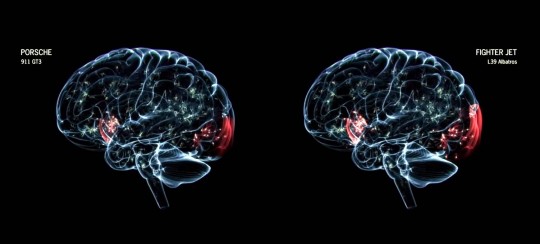Your Brain on Porsche: Neuro-Nonsense

The last few months have been mostly good news for neuromarketers. From major university research to corporate investment, credibility is on the rise. But, completely dismissing the sketchy science perception won’t be possible as long as people use and abuse neuromarketing concepts and technology.
Porsche, a brand grounded in technology, opted to ignore its roots in science and engineering by creating an amusing, albeit highly questionable, ad for their 911 GT3 sports car.
Their starting premise isn’t bad – measure brain activity of someone experiencing rides in a fighter jet and a Porsche, and compare the two. The ad documents how they did this. The conclusion of this study was that while the aerobatics in the jet caused slightly higher levels of brain activity, the Porsche ride stimulated the same areas and was quite similar overall.
Here’s the ad:
This all seems logical and even believable to the casual observer. Motor industry sites like driving.ca and carscoops.com shared the video as actual science that had been turned into a commercial. The Porsche website refers to the video as “A short documentary about the most extreme G-force test ever” (translated from Dutch).
Closer examination, though, shows the whole thing to be fanciful.
An EEG cap like the one shown in the ad is the one type of device that could measure brain activity on the move, but could it possibly be accurate with the subject laughing, shouting, and undergoing various facial contortions?
The display of brain activity appears to be a fictional visualization of individual neurons firing, and the claim that a high level of activity in the nucleus accumbens, a structure far from the subject’s scalp, was measured seems to more fMRI territory than EEG.
fMRI brain scanners actually can measure activity levels in deep brain structures, but it would be difficult to fit one of those gigantic magnetic tubes in a two seat sports car much less a fighter jet. While the EEG gear can, in fact, be highly portable, the units are susceptible to issues caused by facial movement and muscle activity.
As the blog NeuroBollocks points out, even if some advanced EEG technology actually could accurately measure activity in the nucleus accumbens, it couldn’t measure dopamine release as claimed in the ad.
The scientist named in the ad is apparently fictional as well.
As a piece of advertising content aimed at consumers, I think the Porsche video works just fine. It’s too bad that it’s not more clearly labeled as fiction.
(H/t to Vaughan Bell and his Guardian article that brought the Porsche ad to my attention.)
